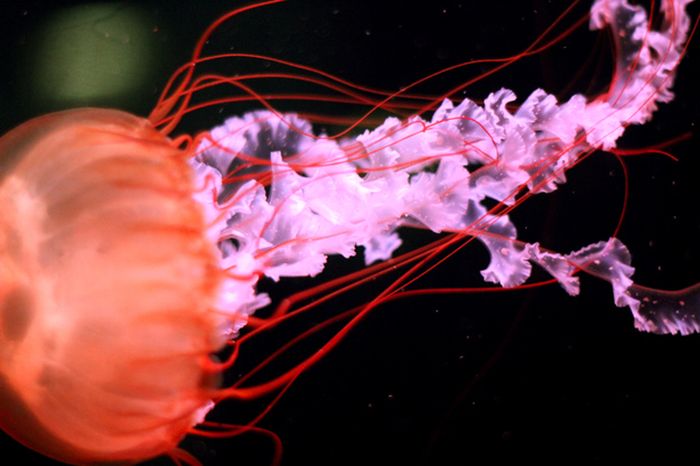|
|
Jellyfish
|
The presence of ocean blooms is usually seasonal, responding to prey availability and increasing with temperature and sunshine. Ocean currents tend to congregate jellyfish into large swarms or "blooms", consisting of hundreds or thousands of individuals. In addition to sometimes being concentrated by ocean currents, blooms can result from unusually high populations in some years. Bloom formation is a complex process that depends on ocean currents, nutrients, temperature, predation, and oxygen concentrations. Jellyfish are better able to survive in oxygen-poor water than competitors, and thus can thrive on plankton without competition. Jellyfish may also benefit from saltier waters, as saltier waters contain more iodine, which is necessary for polyps to turn into jellyfish. Rising sea temperatures caused by climate change may also contribute to jellyfish blooms, because many species of jellyfish are better able to survive in warmer waters. Jellyfish are likely to stay in blooms that are quite large and can reach up to 100,000 in each.
There is very little data about changes in global jellyfish populations over time, besides "impressions" in the public memory. Scientists have little quantitative data of historic or current jellyfish populations. Recent speculation about increases in jellyfish populations are based on no "before" data.
The global increase in jellyfish bloom frequency may stem from human impact. In some locations jellyfish may be filling ecological niches formerly occupied by now overfished creatures, but this hypothesis lacks supporting data. Jellyfish researcher Marsh Youngbluth further clarifies that "jellyfish feed on the same kinds of prey as adult and young fish, so if fish are removed from the equation, jellyfish are likely to move in."
Some jellyfish populations that have shown clear increases in the past few decades are "invasive" species, newly arrived from other habitats: examples include the Black Sea and the Caspian Sea, the Baltic Sea, the eastern Mediterranean coasts of Egypt and Israel, and the American coast of the Gulf of Mexico. Populations of invasive species can expand rapidly because there are often no natural predators in the new habitat to check their growth. Such blooms would not necessarily reflect overfishing or other environmental problems.
|
|









